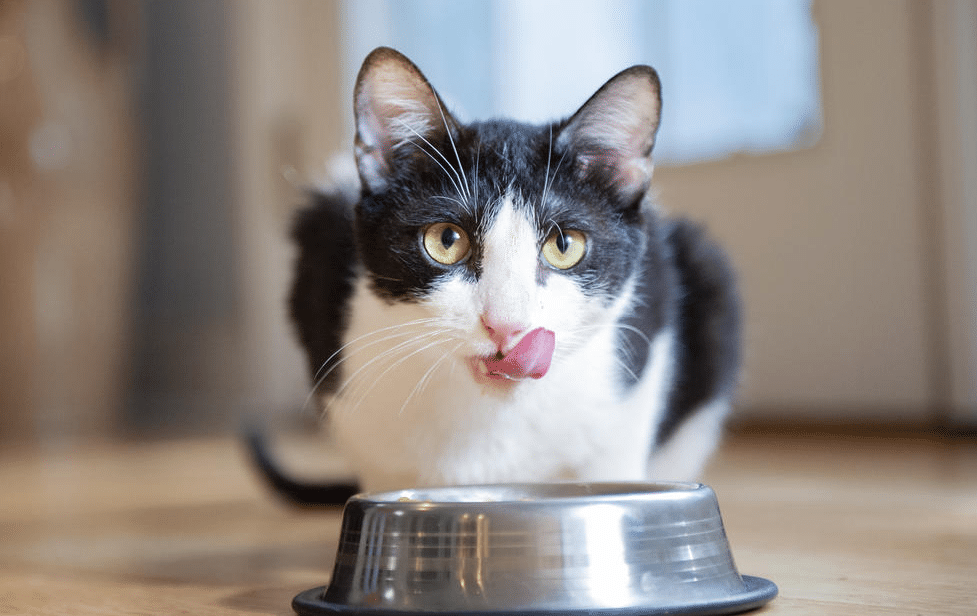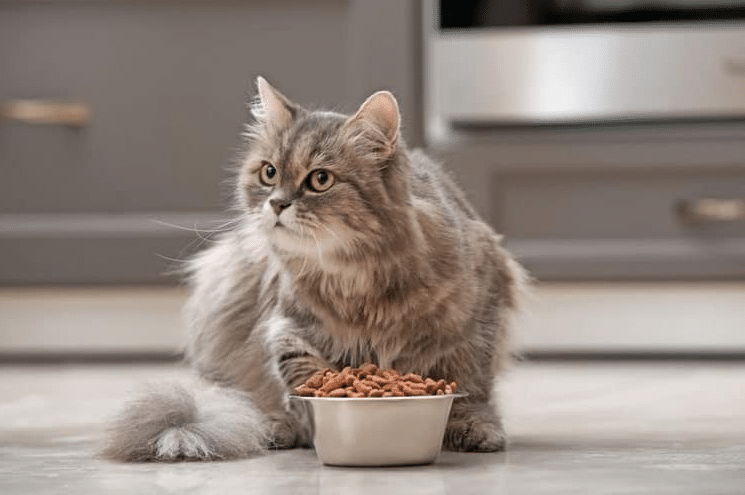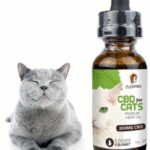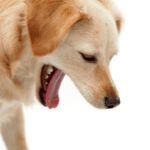How Much Should I Feed My Cat By Age
How Much Should I Feed My Cat By Age
How Much Should I Feed My Cat: If you’re a first-time cat owner, “How much should I feed my cat?” is likely to be one of your first questions when you bring your cat home. Even if you’ve owned cats for years, you may sometimes wonder whether your cats are getting too little food or too much. Let’s go through a few factors to consider when answering “How much should I feed my cat”?
Probably the most common mistake people make when feeding cats is over-feeding, says Joe Bartges, DVM, PhD, DACVIM, DACVN, professor of medicine and nutrition, the Acree Endowed Chair of Small Animal Research, in the College of Veterinary Medicine, at the University of Tennessee. “Obesity is the most common nutritional disease seen in cats.”

Although a pudgy kitty may look kind of cute, obesity is associated with cat health issues includingdiabetes, arthritis , and urinary tract disease. In fact,Bartges tells WebMD that cats may suffer from something similar to that very human condition, metabolic syndrome.
To determine the amount to feed your cat, there are many factors to consider, including:
- Her age
- Her weight
- Her energy level
- Whether she is pregnant or nursing
- Whether you feed wet food, dry food or both
- The nutrient content of your cat’s food
- Whether she’s an indoor cat, outdoor cat or both
How Much Wet Food Should I Feed My Cat
You can feed your cat wet food daily. Check the can or consult with your veterinarian for feeding recommendations. In general, you can feed an average-sized adult cat one 3-ounce can per 3 to 3-1/2 pounds of body weight daily. You should adjust this amount depending on whether you also feed your cat dry kibble.
Your veterinarian may also recommend feeding more or less wet food depending on your cat’s weight, health and other factors.Age and activity level also play a role in determining the proper amount of calories needed.
A growing kitten needs many more calories than an adult or senior cat. An active cat that runs and plays frequently will need more calories than a cat that remains sedentary most of the time. A nursing mother needs extra calories to produce milk and stay healthy.
Cat Food Guidelines
It’s acceptable to use the feeding recommendations on the packaging as a starting point for how much to feed. The website for the diet may go into greater detail about feeding guidelines. The amount you feed may need to be adjusted based upon how your cat responds. If you notice undesired weight gain or loss, the amount should be adjusted. If your cat seems extremely hungry and is not gaining weight, it’s acceptable to increase the amount you feed.
How Much Dry Food Should I Feed My Cat
Many cat owners feed only dry food to their felines. “Dry food is fine as long as it is complete and balanced,” says Dr. Kallfelz. Dry food may be less expensive than canned cat food and may stay fresher longer. Cats that eat only dry food need to be provided with lots of fresh water, especially if they are prone to developing urinary tract blockages. For all cats, constant availability of fresh, clean water is important.

Canned cat food is typically about 70 to 80 percent water, and can be fed in addition to or instead of dry. Some cats may find canned food more palatable. These cats may consume too much if they are allowed free access to food. Of course, this may occur with dry food as well. “Food with average palatability may be preferable,” says Dr. Kallfelz. If it is extremely palatable, the cat may be more likely to overeat. If it is not quite so palatable, he may be less likely to overeat.
How Much Canned Food Should I Feed My Cat
However, he’s careful to note, there’s no one formula for deciding how much to feed. “Just like with people, [cats have] different biological makeups, metabolic rates, nutritional needs, and caloric demands.” Remember the nutritional information on a typical can, or bag, of cat food, is based on the “average” cat.
- If your cat is within 1-2 pounds of these weights and appears to be a healthy body weight, start by feeding two-thirds of the amount listed on the can. So if the can states you should feed one full can per meal, scoop out approximately two-thirds of a can into your cat’s bowl.
- If your cat is more than 1-2 pounds off from the average weight but is still a healthy weight based on body size and type, follow the same directions. Otherwise, if your cat is clearly underweight or overweight, start with a whole can for an underweight cat, and half a can for an overweight cat.
- When measuring out the food, you can also use a simple food weight scale if you want to be more exact.
- If he’s gaining, reduce the amount you feed by about a tablespoon and continue monitoring.
How Much And How Often Should I Feed My Cat?
“From age six months to maturity, most cats will do well when fed two times a day.” Once the cat becomes an adult, at about one year, feeding once or twice a day is appropriate in most cases. Senior cats, age seven and above, should maintain the same feeding regimen.
How Much Should You Feed Your Indoor Cat?
Here’s a general guideline that nutrition experts agree on: A healthy, active, 10-lb adult cat requires 270-320 calories per day.
How Much Should I Feed My Cat Chart?
Using these counts as a guide, an 8-pound cat would need 4/5 of a cup of dry food or just less than a full 6-oz can (or two 3-ounce cans) of wet food per day.
Why Are My Cats So Hungry All The Time?
Hyperthyroidism: Cats with an overactive thyroid gland have hyperthyroidism and it makes them always feel hungry. Simple blood tests done by your vet can diagnose a cat with this illness. Your cat will feel hungry because its body lacks the energy needed despite eating. A cat with diabetes may need insulin injections.



